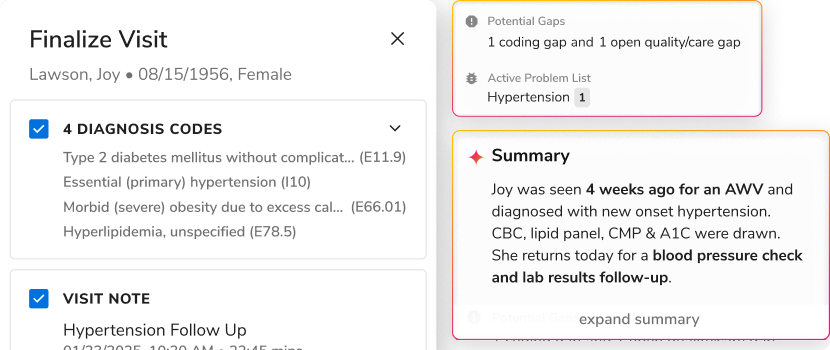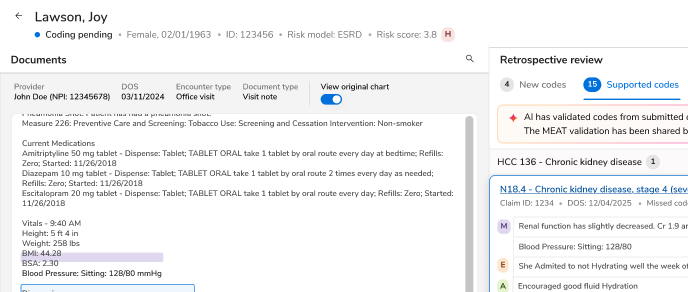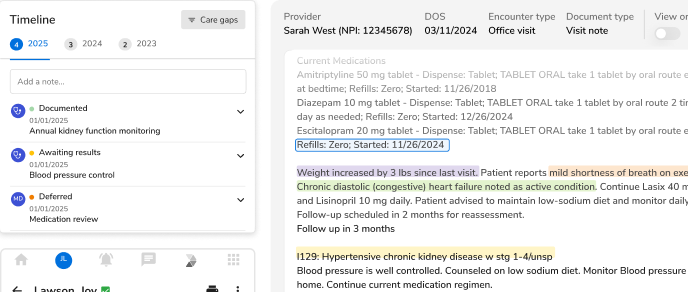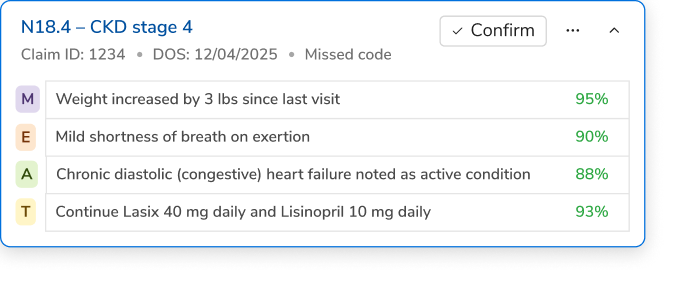The Democratization of Specialty Care: How AI is Bridging the Gap in Underserved Areas

Imagine walking into a medical facility in rural America. You are highly unlikely to find a specialist who can attend to your healthcare needs. This is the reality for over 90% of rural counties in the US facing a shortage of physicians.
From workforce challenges to a lack of insurance coverage, there are several barriers to accessing healthcare. Where does this leave one-fifth of the American population living in underserved regions?
They can still access quality care with the help of AI. In this blog, we will discuss several AI-driven solutions that are bridging the gap to quality care.
Exploring Modern Solutions to Overcome Healthcare Inaccessibility
Healthcare systems can harness the power of various technologies to enable the diagnosis and delivery of specialist care in underserved regions across the country. This can prevent delays in quality care, mitigating long-term impacts on the health of communities.
AI in Action: Diagnosing from a Distance
AI-powered diagnostic tools hold immense potential to assist primary physicians in providing specialist-level insights to patients in underserved areas. For instance, AI-based imaging analysis has supported physicians in diagnosing conditions like lung cancer or diabetic retinopathy at the initial stages. In remote or rural areas where it may be difficult to catch hold of a radiologist, AI can play a key role in early diagnosis, ensuring timely intervention.
Let’s further discuss how AI can support diagnosis :
- A second set of eyes: AI-powered tools can analyze complex medical images (X-rays, CT scans, MRIs), patient symptoms, lab results, and complex data such as electronic health records (EHRs). Thus, detecting subtle patterns in the available data that a physician may miss after a quick scan.
- Enhanced clinical decision-making: Employing AI-powered Clinical Decision Support Systems (CDSSs) could provide real-time support to providers during diagnosis, enabling them to make more informed decisions about their patients. Since a physician cannot be an expert in every data type (e.g., proteomics), AI can be leveraged to analyze multimodal patient data. This will break down data silos and improve the accuracy of diagnosis.
- Addressing health-related social needs: By analyzing several non-clinical factors that impact a patient’s health, such as lifestyle factors, AI-powered solutions can empower clinicians to design tailored treatment plans that are more effective.
- Improved clinical documentation: To simplify the diagnostic process, providers in rural areas can rely on AI to document their conversations with patients. Through advanced Natural Language Processing (NLP) and speech recognition, AI-powered tools can generate structured clinical notes. This reduces the documentation burden and improves the accuracy of diagnosis.
However, AI is not meant to replace but assist physicians with their diagnoses. It is important to establish a framework where AI can be used to enhance clinical decisions while providers still continue to deliver personalized care to patients.
Telemedicine: Specialist Care One Click Away
Telemedicine can be employed by healthcare systems to deliver effective and quality healthcare to remote or rural areas, closing the care gap. This is crucial for treating complex conditions.
Some of the ways telemedicine can benefit communities in underserved areas include:
- Enhancing access to specialists: Patients in rural or remote areas suffering from chronic conditions such as diabetes can easily connect with specialists virtually without traveling long distances to get quality treatment.
- Improving collaborative care networks: Telemedicine also allows rural doctors to schedule meetings with other specialists to confirm a patient’s diagnosis or understand other treatment approaches. The Project ECHO®—Extension for Community Healthcare Outcomes is one such initiative that encourages knowledge exchange between primary physicians and specialists to provide timely and holistic care to patients.
- Enables remote monitoring of patients: Solutions such as wearables and remote sensors allow physicians to reach patients in remote settings. This is especially beneficial for monitoring chronic patients or providing care to senior citizens in real time.
- Addresses social determinants of health (SDoH): By connecting providers with rural communities, telemedicine can enable providers to quickly identify various social factors impacting the patient’s health outcomes, such as a lack of nutritious food.
- Encourages patient adherence to treatment plans: Telemedicine applications send automated reminders to patients, helping them to stay on track. Such platforms allow the provider to be in constant touch with the patient and answer questions about medicines or treatment plans. This leads to better patient adherence to medications and care plans.
Though telemedicine offers considerable promise, its widespread adoption in rural or remote areas is complicated by factors such as limited broadband availability or regulatory restrictions. Such issues need to be addressed to ensure that quality care becomes available to everyone living in rural parts of the country.
The Path Ahead
Rewriting the healthcare inaccessibility equation in underserved regions would require concerted efforts of various stakeholders besides technology adoption. While integrating AI and telemedicine extensively throughout rural and remote areas could serve as a starting point, this needs to be complemented by strategic planning and policy support. This would eventually help close the healthcare gap, ensuring quality care for all.

.png)





.png)









.svg)
.svg)

.svg)

